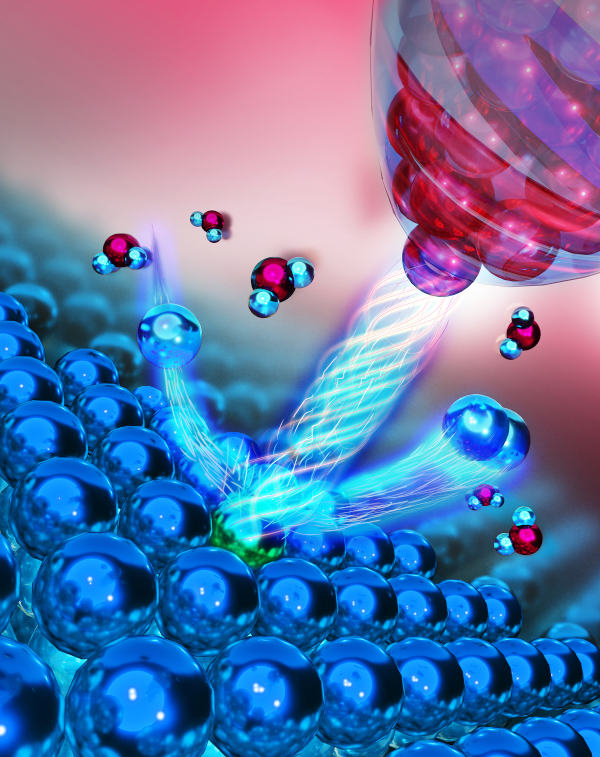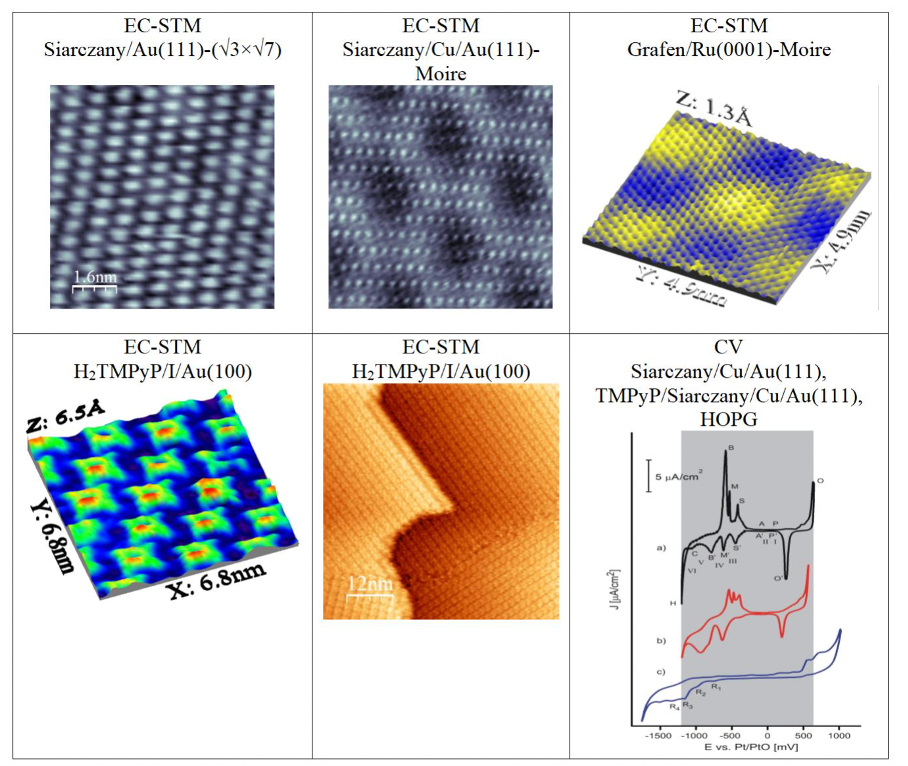
EC-STM Group
EC-STM Group
Instytut Fizyki Doświadczalnej
Uniwersytet Wrocławski
Pl. M. Borna 9, 50-204 Wrocław
Head:
prof. dr hab. Marek Nowicki
Members:
Anna Futyma
dr Tomasz Kosmala, prof. UWr
dr Katarzyna Lament
dr Radosław Wasielewski, prof. UWr
mgr Paulina Wira
Visiting professors:
prof. dr hab. Moritz Sokolowski
prof. dr hab. Klaus Wandelt
Scientific activities
Processes at the solid/liquid interface are of great technological importance. Examples of large-scale applications include electroplating and passivation to prevent corrosion, batteries and fuel cells for energy storage and conversion, electrocatalysis and flotation. Currently nanoscale chips are produced electrochemically, in the so called damascene process. Special coatings lead to obtaining super hydrophobic and self-cleaning surfaces. Understanding and optimising those processes require detailed primary research. The electrochemical scanning tunneling microscope (EC-STM) enables studying physicochemical processes at the solid/liquid interface at atomic resolution.
The EC-STM laboratory researches new materials for energy storage and conversion. They respond to society’s current needs for sustainable development of alternative and renewable energy sources. Converting chemical energy into electricity and vice versa requires developing innovative electrocatalysts to be used in fuel cells, batteries, and electrolysers that usually are technologically optimised via the empirical trial&error method. The EC-STM laboratory applies the knowledge-based approach by conducting primary level research using advanced surface science techniques that allow insight into the properties and processes occuring at the solid/liquid interface under environmental conditions at atomic resolution. The research group conducts research on on model systems prepared under ultra-high vacuum (UHV) conditions reflecting core-shell-type nanostructured electrocatalysts based on 2D materials such as graphene, transition metal dichalcogenides (TMDC), and ultra-thin oxide films. Produced materials are tested with an electrochemical scanning tunneling microscope (EC-STM) and cyclic voltammetry (CV) due to their potential use as systems for electrocatalytic hydrogen evolution (HER) and oxygen evolution (OER) reactions, and oxygen reduction reaction (ORR). Those three processes are the key reactions in developing sustainable and green energy systems. It is of great importance for the protection of the environment, reduction of the greenhouse effect, and obtaining clean energy without the use of fossil fuels, especially the development of hydrogen technology. The aim of the research conducted is to precisely define the the relationship between catalytic activity and material structure at the atomic level using advanced and complementary in-situ and in-operando research techniques. The research conducted is interdisciplinary, combining scientific fields such as physics, chemistry (especially electrochemistry), nanotechnology and materials engineering, and has important implications for the rational design of modern and highly efficient electrocatalysts.
The EC-STM laboratory
Sample results

